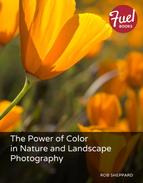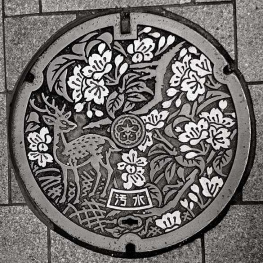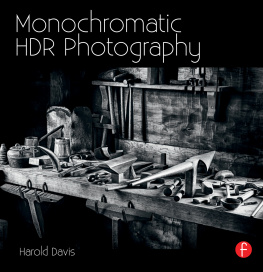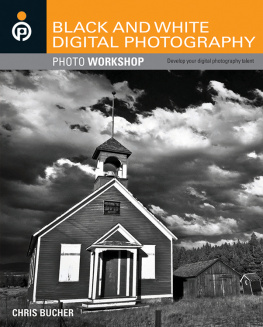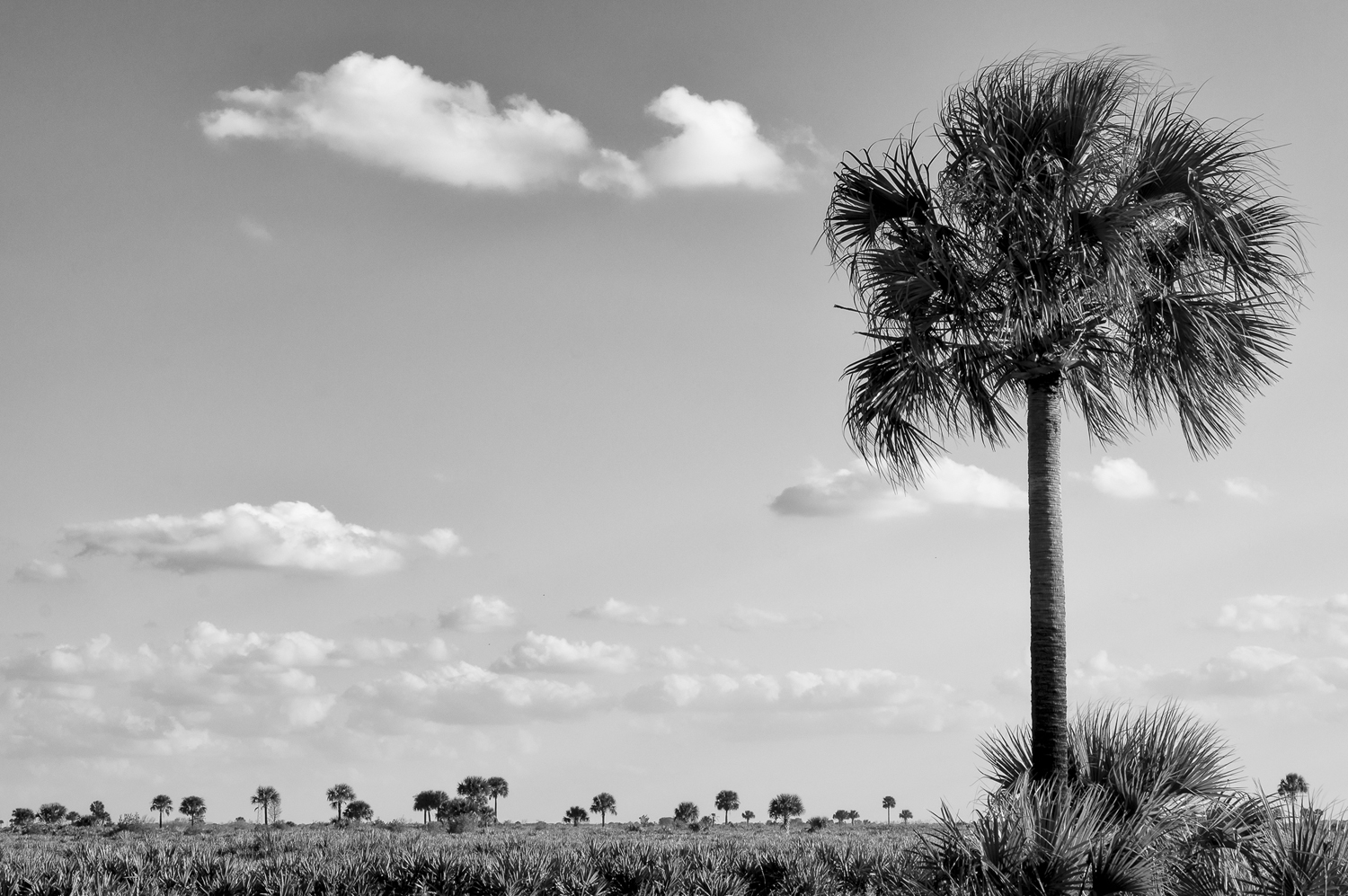Black-and-white images take you beyond what most people photograph. To get you started thinking about black-and-white photography, I will take you through a little history to help you see how it has evolved and how that might inspire your own photography.
Black-and-white photography has the potential to make any photographer a better photographer
Landscapes are where photography began, and in the beginning, black and white was all there was. I love working a landscape in black and white, especially when I can get bold contrasts like this. This shot is at sunset in Joshua Tree National Park, California. The sun is off the foreground Joshua tree, but on the background rocks for a dramatic look. The timing is important.
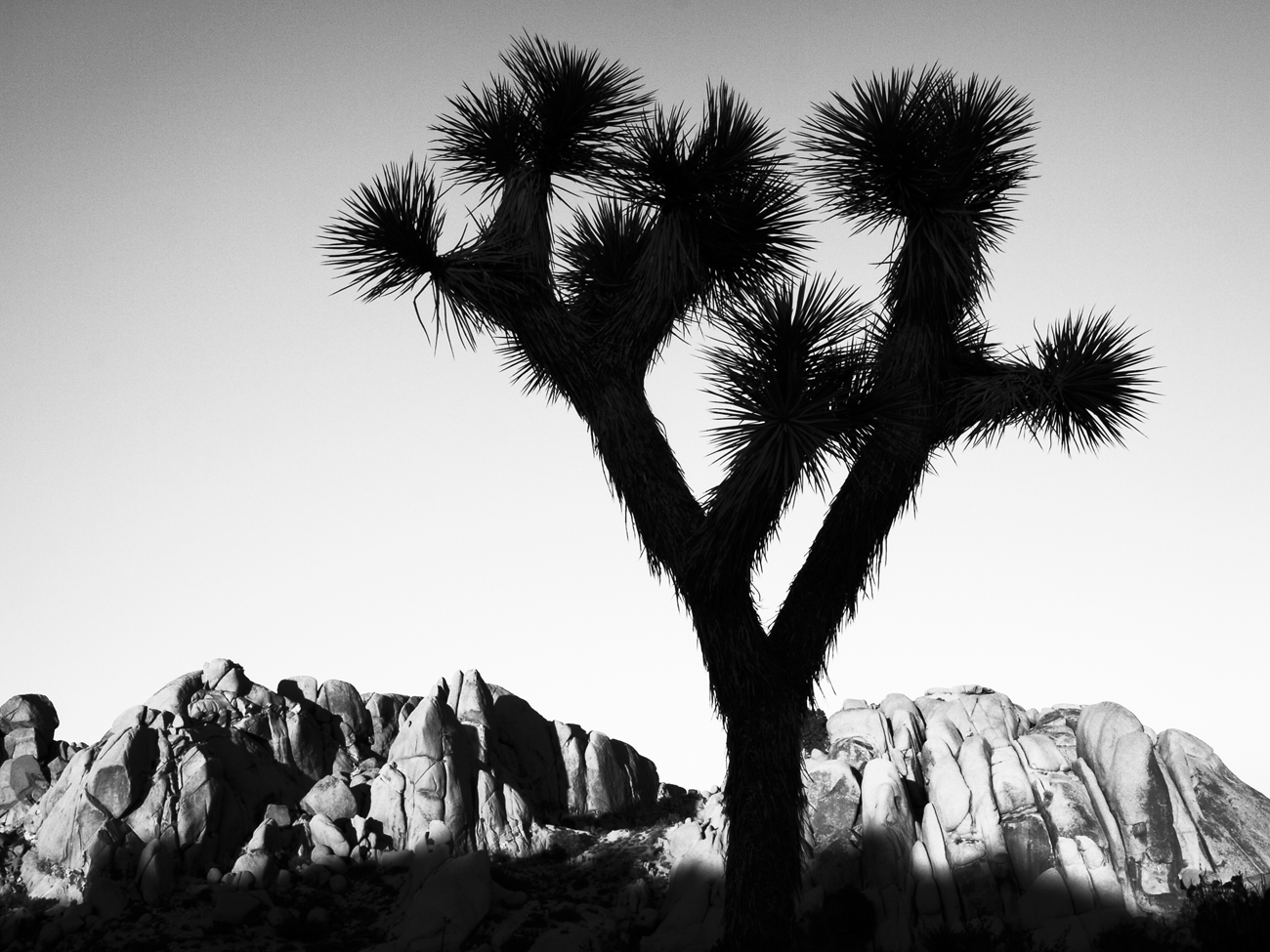
ISO 100, 1/15, f/22, 23mm (Four Thirds)
I kept the camera relatively low so that I could put the silhouette of the Joshua tree cleanly against the sky.
TIP
Focal length is meaningless without a format, so format is noted. I used to shoot APS-C format cameras, but now I shoot with Panasonic Lumix Micro Four Thirds DSLM cameras (which are the same format as Four Thirds).
A Tradition Evolved
Black-and-white photography is where it all started. Photography started in the mid-1800s, and became a very important part of the world starting with the Civil War. It wasnt until 1935 that Kodachrome was invented, and it was not a significant part of photography until decades later. In fact, Ansel Adams did his major work between 1935 and 1980, and it was all black-and-white imagery. (Note: Adams did shoot color on assignment for publications like Fortune, but he never liked it.)
Yet by the 1980s, color photography was displacing black-and-white photography in most publications. Black and white became relegated to the cheap pages and then disappeared from magazines altogether. Color print film became cheap and easy to use. Black and white almost disappeared. It was seen as inferior, though people still loved Adams work.
But a little over 10 years ago, this started to change. Black and white became rare enough that it was seen as elegant and classic! Photographers started going back to it. There were films that used color printing technology to create black-and-white photos that anybody could take to any color photo lab. Fine art photographers started using it again. With digital, it became easy to change a color image to black and white (though as you will learn, easy does not necessarily translate into good or effective). Today, software is available to create black-and-white images from color, including Adobe Lightroom, Nik Software Silver Efex Pro and Topaz B&W Effects. You will learn more about them later in the book.
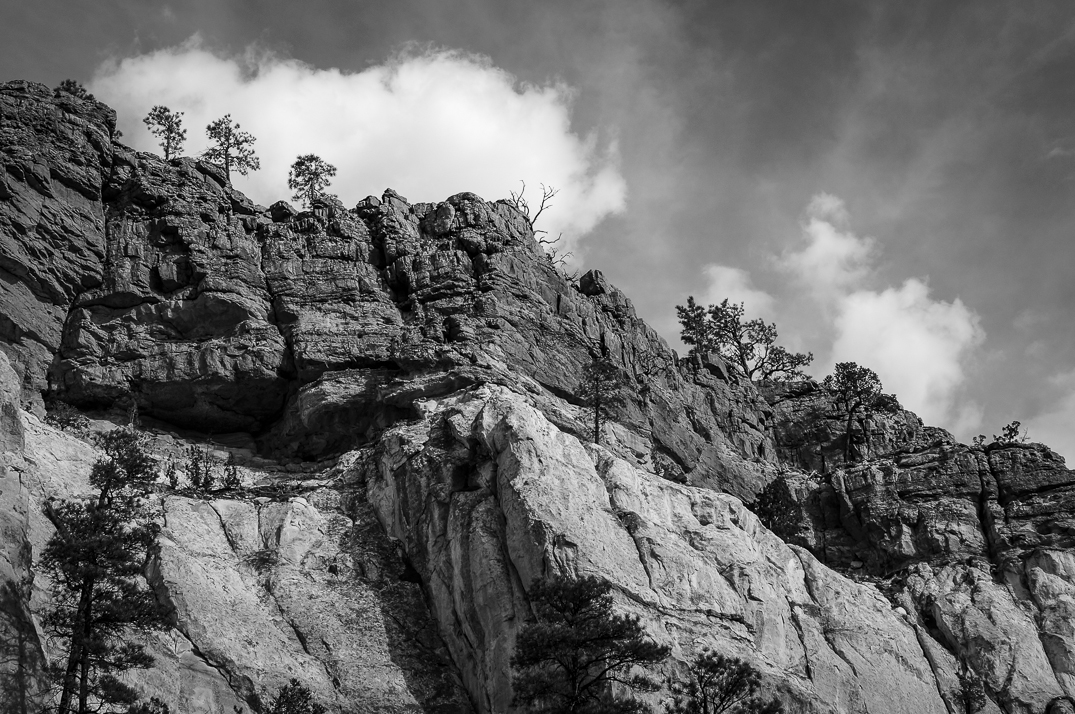
ISO 100, 1/250, f/11, 45mm (APS-C)
Landscapes are a classic way of using black and white and can give you a very elegant look at nature. El Malpais National Monument, New Mexico.
So black-and-white photography came from the past when it was the most important way of photographing because it was the only way! There was a strong tradition of learning the craft of photography with black-and-white techniques, and since black-and-white photography was the only thing available, a lot of work went into getting the best from black-and-white prints, starting with how you shot the photo.
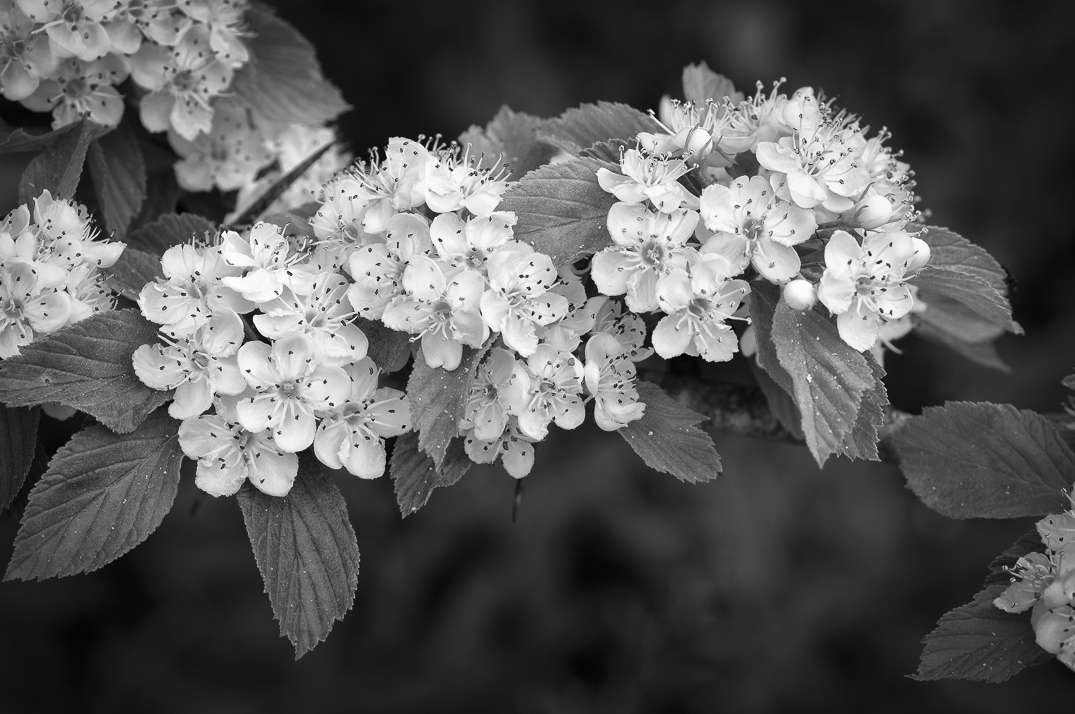
ISO 400, 1/640, f/8, 90mm (APS-C)
Black-and-white is not just for landscapes. Hawthorne flowers, North Carolina.
When color took over, it created a gap in black-and-white expertise. A lot of people either never learned to work with black and white or they forgot the techniques of the past, and the computer seems so easy to use. Just take the color out of a photo, add some special effect, and tah-dah! You have a black-and-white photo. Sort of. But computer production for black-and-white photos often isnt really that good or effective. Remember this (there may be a quiz!): Good black-and-white photography is not about the removal of color!
If software could do it all simply by eliminating that pesky color from a photo, we should see much better black-and-white work all around us. We should see stunning black-and-white images from everyone since everyone can get a superb digital camera. But we dont.



